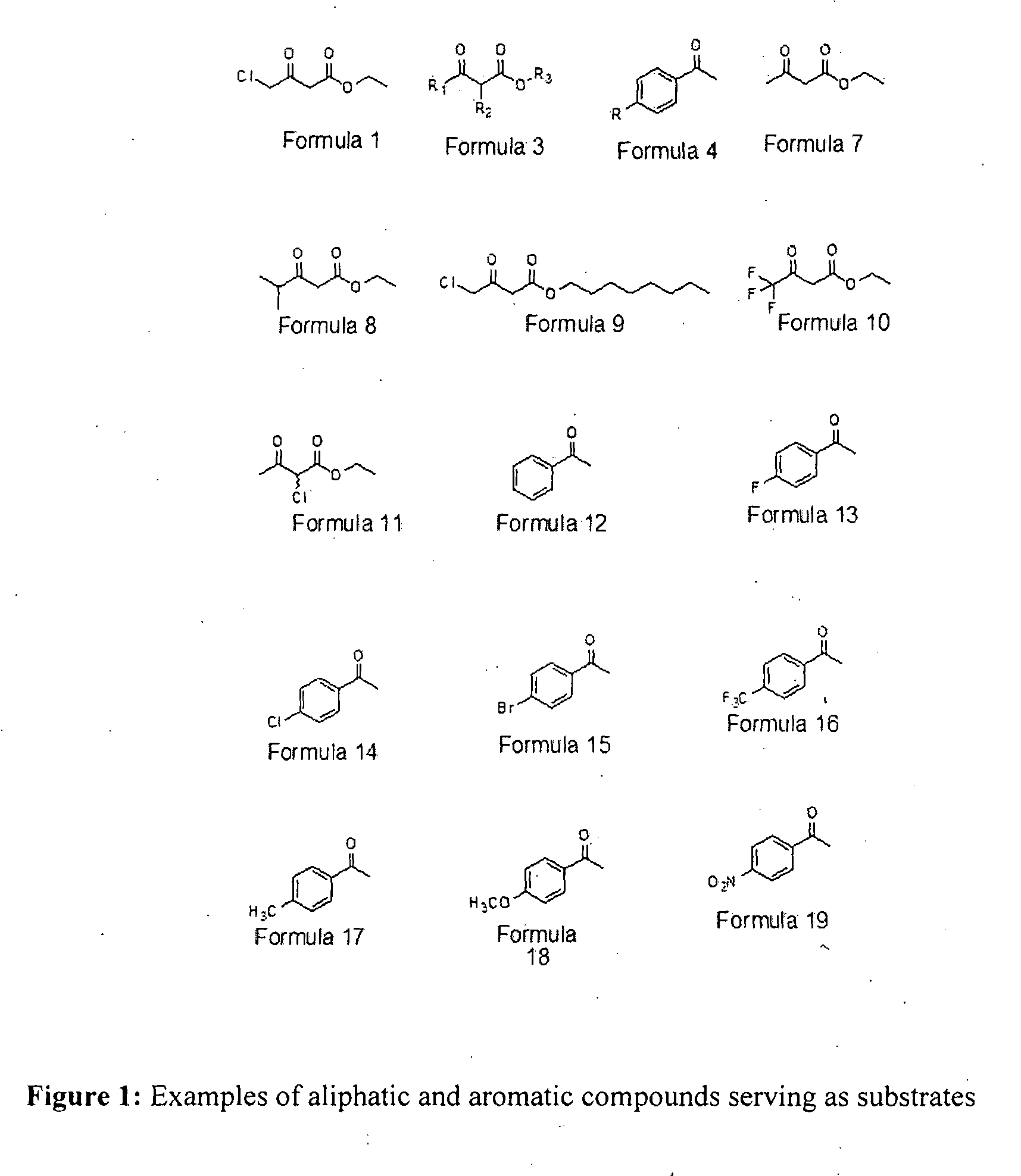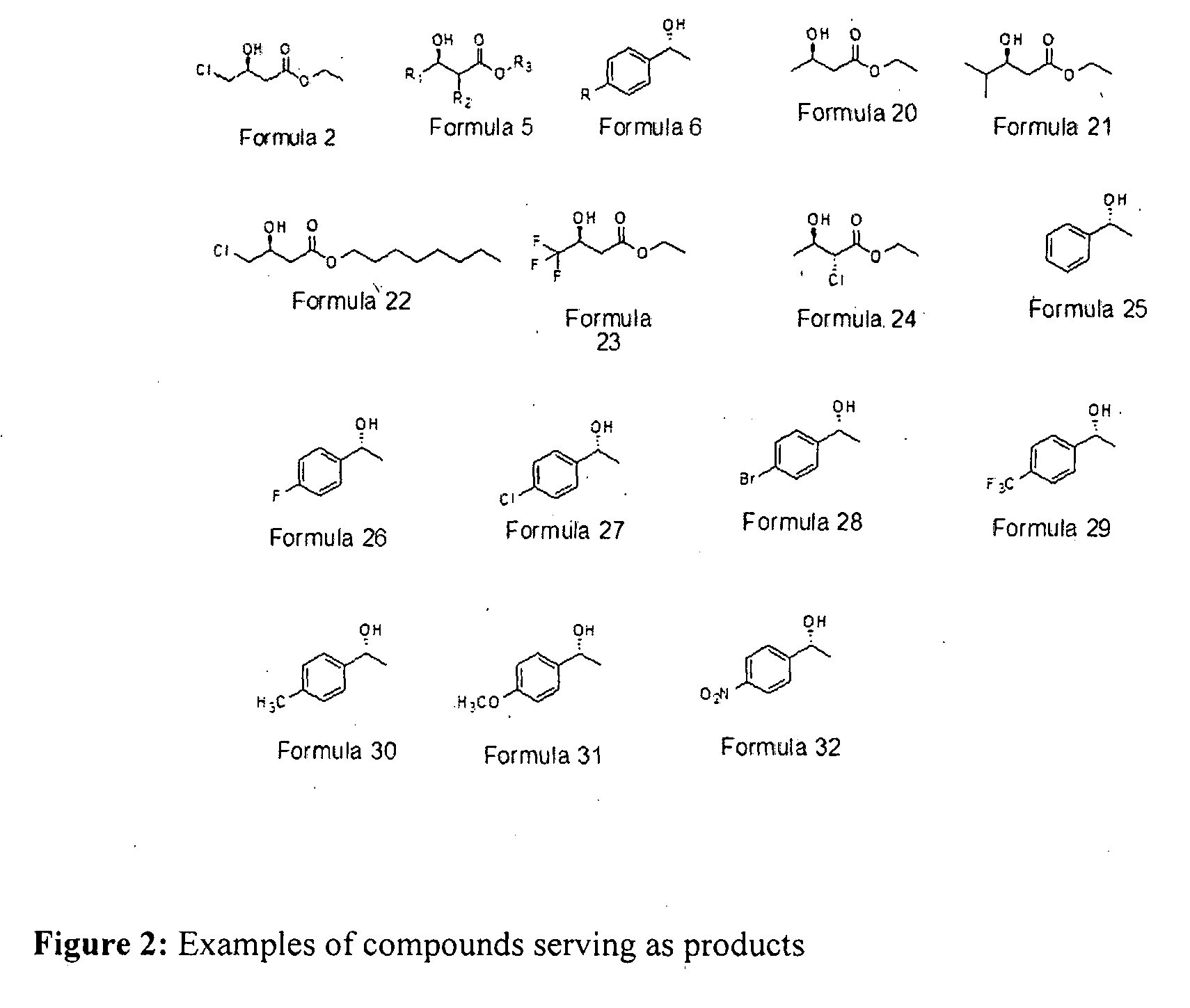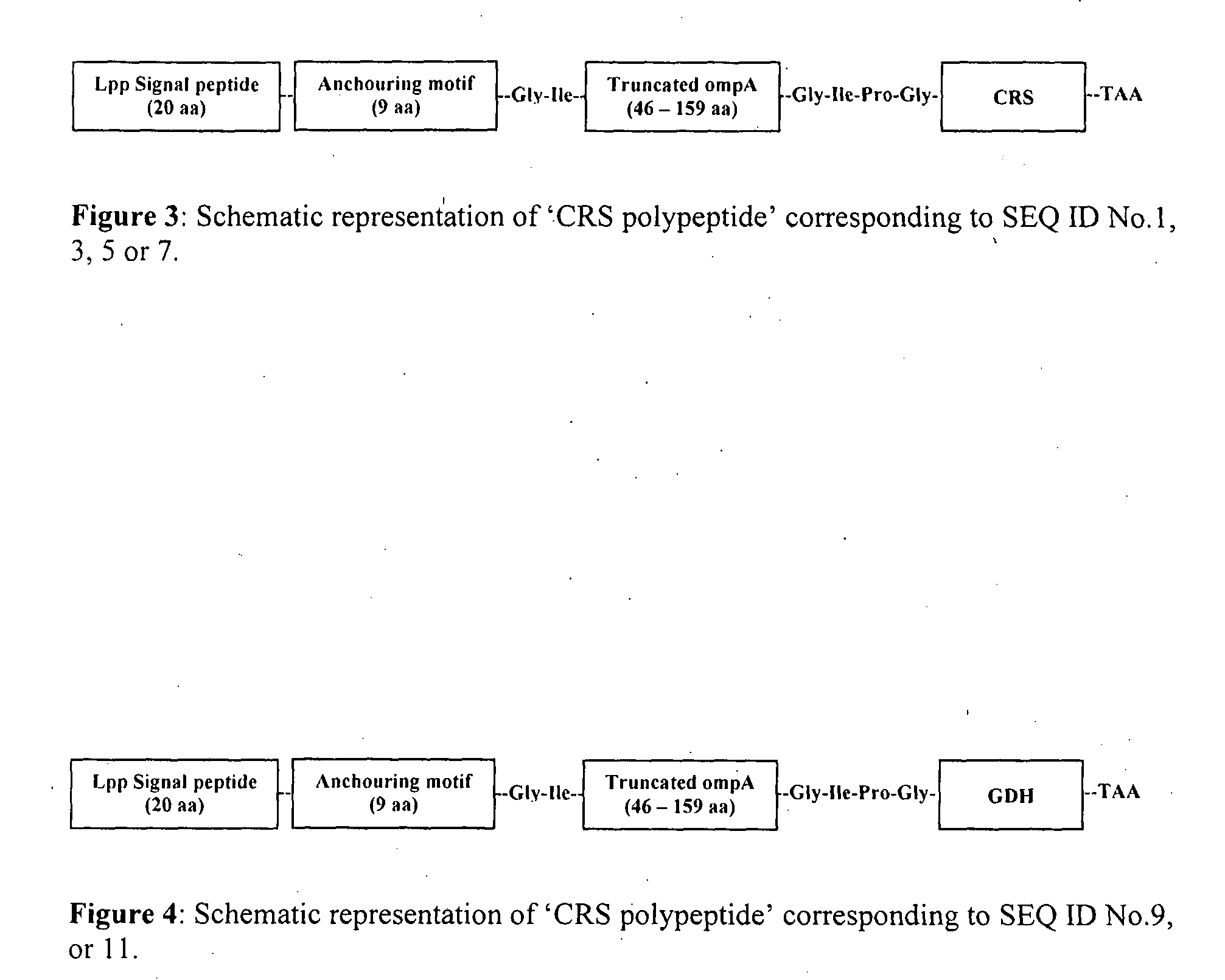Designer cells for enantioselective reduction of ketones and use thereof in efficient production of enantioenriched alcohols
a technology of enantioselective reduction and design cells, which is applied in the direction of biochemical equipment and processes, enzymes, fermentation, etc., can solve the problems of low efficiency, low optical purity, and inability to synthesize industrially important optically active alcohols, and achieve high productivity
- Summary
- Abstract
- Description
- Claims
- Application Information
AI Technical Summary
Benefits of technology
Problems solved by technology
Method used
Image
Examples
example 1
Construction of Expression Plasmid pET23(a)-Omp-CRS Expressing Carbonyl Reductase on the Surface of Escherichia coli
[0332]The artificial custom synthesized plasmid pUC 19-omp-CRS having DNA according to present invention has nucleotide sequence of SEQ ID NO:2 of the Sequence Listing codes for the polypeptide has an amino acid sequence of SEQ ID NO:1 of the Sequence Listing were double digested by Nde1 and EcoR1 and product was separated by agarose gel electrophoresis, 1.3 Kb DNA fragment has nucleotide sequence of SEQ ID NO:2 of the Sequence Listing, was excised from the gel and purified using Qiaquick kit (Qiagen). Plasmid. pET 23(a) was separately digested with Nde1 & EcoR1, followed by the dephosphorylation with calf intestinal alkaline phosphatase to avoid self-ligation. Nde1 & EcoR1 (NEB Ltd, UK) digested 1.3 Kb DNA fragment has nucleotide sequence of SEQ ID NO:2 of the Sequence Listing and pET 23(a) were ligated with T4 DNA Ligase (NEB Ltd, UK) and transformed in Escherichia ...
example 2
Construction of Expression Vector pET23(a)-CRS Expressing Carbonyl Reductase in the Cytoplasm of Transformants
[0335]It was constructed by using the knowledge disclosed in US Patent 2010 / 0028972. CRSF (SEQ ID NO:26) and CRSR (SEQ ID NO:28) primers for cloning were synthesized based on the nucleotide sequence of carbonyl reductase gene represented by SEQ ID NO:14 of the Sequence Listing, which code a polypeptide has an amino acid sequence of SEQ ID NO:13 of the Sequence Listing. The custom synthesized pUC 19-omp-CRS plasmid was subjected to polymerase chain reaction (PCR) for 30 cycles of a reaction. The PCR conditions were, initial denaturing at 95° C. for 5 min followed by 30 cycles of 95° C. for 60 s, 58° C. for 60 s and 72° C. for 60 s as well as a final extension step of 72° C. for 5 min. The purified PCR product was digested with Nde1 & Xho1, and was run on the 1% agarose gel. The 0.87 Kb Nde1 and Xho1 digested fragment was excised from the gel and purified using Qiaquick kit (Q...
example 3
Construction of Expression Vector pETDuet1-Omp-CRS; Omp-GDH Co Expressing Carbonyl Reductase and Glucose Dehydrogenase on the Surface of Transformants
[0337]Construction of expression vector pETDuet1-omp-CRS; omp-GDH, which co expressing the two polypeptides, one having the carbonyl reductase activity has an amino acid sequence of SEQ ID NO: 1 of the Sequence Listing and the other polypeptide has an amino acid sequence of SEQ ID NO: 3 of the Sequence Listing having coenzyme regeneration activity on the surface of the transformant / s. To achieve this goal, inventors have chosen plasmid pETDuet1 that contains two multiple cloning sites, each of which is preceded by a T7 promoter / lac operator and a ribosome binding site (rbs). omp-CRS and omp-GDH gene were cloned in pETDuet1 plasmid, which is a two-step procedure.
[0338]In first step, DNA according to present invention has nucleotide sequence of SEQ ID NO:2 of the Sequence Listing codes for the polypeptide has an amino acid sequence of SE...
PUM
| Property | Measurement | Unit |
|---|---|---|
| pH | aaaaa | aaaaa |
| temperature | aaaaa | aaaaa |
| temperature | aaaaa | aaaaa |
Abstract
Description
Claims
Application Information
 Login to View More
Login to View More - R&D
- Intellectual Property
- Life Sciences
- Materials
- Tech Scout
- Unparalleled Data Quality
- Higher Quality Content
- 60% Fewer Hallucinations
Browse by: Latest US Patents, China's latest patents, Technical Efficacy Thesaurus, Application Domain, Technology Topic, Popular Technical Reports.
© 2025 PatSnap. All rights reserved.Legal|Privacy policy|Modern Slavery Act Transparency Statement|Sitemap|About US| Contact US: help@patsnap.com



